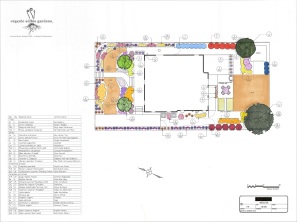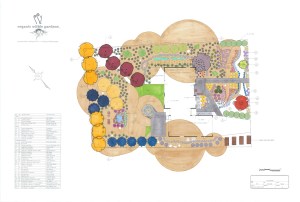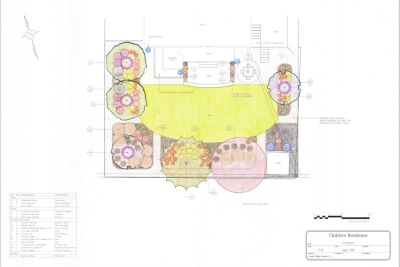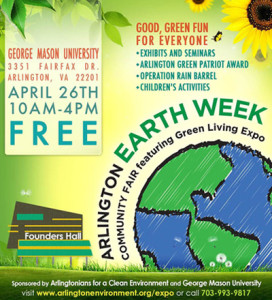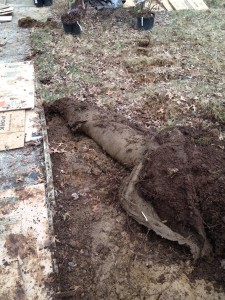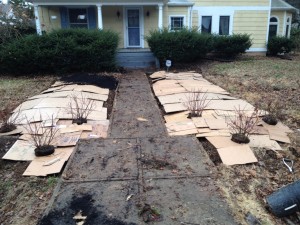Ecology vs. Native Plant Bias
©2014 Jonathan Storvick and Organic Edible Gardens LLC
Author’s note: This article is likely to really upset some people, as it challenges assumptions that many take for granted. Our purpose in sharing this information is to add some different perspectives to the debate and perhaps open up new avenues of thinking about our fragile ecosystems as a whole.
There may be no more hotly contested topic in the plant world than that of “invasive” plants vs. “native” plants. The idea that we should only plant species that are native to an area has become one of the most popular ideas in the horticulture world. Books such as Bringing Nature Home: How You Can Sustain Wildlife with Native Plants , by Doug Tallamy (a great book with some really great ideas, by the way), have spread the idea that “non-native” plants are damaging to ecosystems, reduce biodiversity, and destroy wildlife habitat.
, by Doug Tallamy (a great book with some really great ideas, by the way), have spread the idea that “non-native” plants are damaging to ecosystems, reduce biodiversity, and destroy wildlife habitat.
Some individuals have latched onto these ideas with an almost fanatical enthusiasm, viewing the eradication of invasive plants as a near-religious crusade. Some go even further, saying that not only native species should be planted exclusively, but these native species should be of a local genotype – a genetic lineage based in the immediate area and nowhere else. According to this ideology, a specimen of False Blue Indigo (Baptisia australis) that grew from seed collected locally is fine, but a specimen grown from seed collected 50 miles away is not, and should be viewed as “invasive.” This is eerily reminiscent of other ideologies throughout history that have insisted on the eradication of certain species or “races.” It is not my intention to invoke Godwin’s Law here, but there does indeed exist a link between “invasive” plant eradication and Nazism. David Theodoropoulos has critiqued invasion biology for some time, and gives some interesting information on that connection in this video. This is understandably controversial, and I present it here simply as information to be judged on its own merits.
So what is really the deal with “invasive” and “native” plants? Entire books have been written on this subject, and a full discussion is beyond the scope of a simple blog post. In my opinion, we need to really think about what we mean by the words “native” and “invasive.” As a lifelong student of ecology, the definitions as used by native plant fundamentalists seem arbitrary to me. A long-term, ecological view shows that plant populations migrate of their own accord and change drastically over time. Permaculturist Toby Hemenway has an excellent article explaining this, as well as the idea that non-native plant “invasions” occur as a result of human disturbance of landscapes, rather than as some kind of evil plan on the parts of the plants themselves.
A couple of years ago, I picked up a very interesting book titled Wild Urban Plants of the Northeast: A Field Guide , by a gentleman named Peter Del Tredici. Dr. Del Tredici is a senior lecturer at the Harvard University Graduate School of Design, and teaches plant ecology in the Landscape Architecture program there. He is also a senior research scientist (and former Director of Living Collections) at Harvard’s Arnold Arboretum. What immediately interested me about this book was how it presented certain plants – specifically, plants commonly considered as invasive weeds – in terms of their ecological functions and strategies. When ecosystems are severely disturbed – especially in urban areas, where human-caused disturbance has radically altered the landscape – Nature has a way of coming in and trying to “fix” the problem. Many of these weeds have ecological functions that, over time, heal degraded landscapes. One of the most popular sayings in science history has been “Nature abhors a vacuum.” We could also say that Nature abhors bare soil. Many of the plants in this book are referred to as “disturbance-adapted colonizers of bare ground” – essentially, they grow where most of our native plants cannot – in poisoned, compacted soils, etc.
, by a gentleman named Peter Del Tredici. Dr. Del Tredici is a senior lecturer at the Harvard University Graduate School of Design, and teaches plant ecology in the Landscape Architecture program there. He is also a senior research scientist (and former Director of Living Collections) at Harvard’s Arnold Arboretum. What immediately interested me about this book was how it presented certain plants – specifically, plants commonly considered as invasive weeds – in terms of their ecological functions and strategies. When ecosystems are severely disturbed – especially in urban areas, where human-caused disturbance has radically altered the landscape – Nature has a way of coming in and trying to “fix” the problem. Many of these weeds have ecological functions that, over time, heal degraded landscapes. One of the most popular sayings in science history has been “Nature abhors a vacuum.” We could also say that Nature abhors bare soil. Many of the plants in this book are referred to as “disturbance-adapted colonizers of bare ground” – essentially, they grow where most of our native plants cannot – in poisoned, compacted soils, etc.
Originally my point was to post a link to a single article – The Flora of the Future: Celebrating the Botanical Diversity of Cities by Dr. Del Tredici does much more to illustrate the concept of the positive ecological functions of “invasive” plants in disturbed landscapes than I can elucidate in a short blog article. I would strongly encourage you to read the piece and consider its implications. I think a more holistic view of the subject would lead to more efficient strategies for healing our landscapes.
Here at Organic Edible Gardens, we wholeheartedly support the use of native plants. In our designs, we almost always utilize native plants unless there is a compelling reason to do otherwise – and typically the non-natives we use are edible or functional in other ways. We never use plants that are known to be aggressive or known to escape cultivation and compete with natives. That being said, we think a rational discourse is necessary and we look for any and all effective means to regenerate landscapes and create a happier, healthier planet. We welcome comments from all viewpoints and look forward to continuing this discussion.



